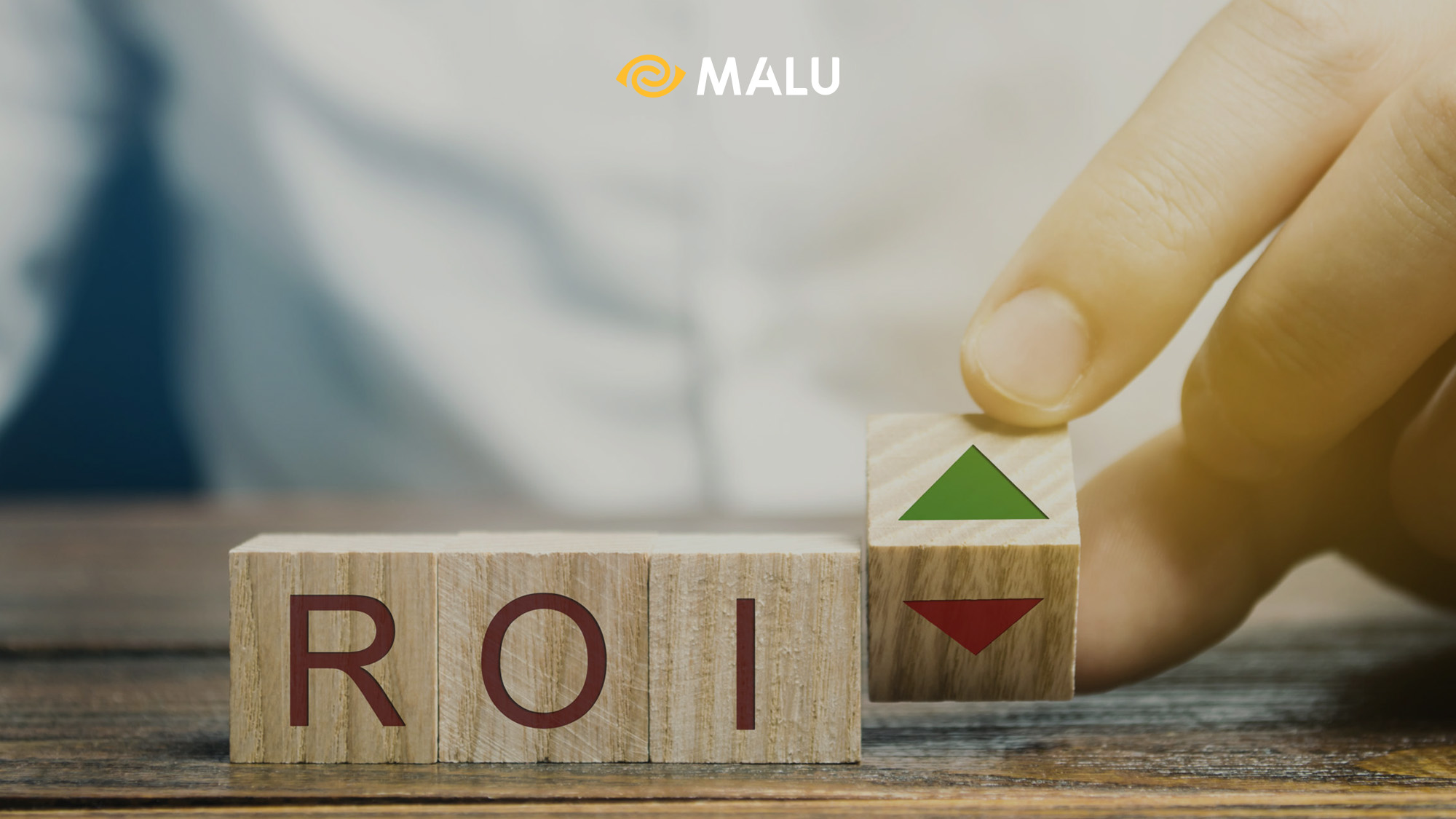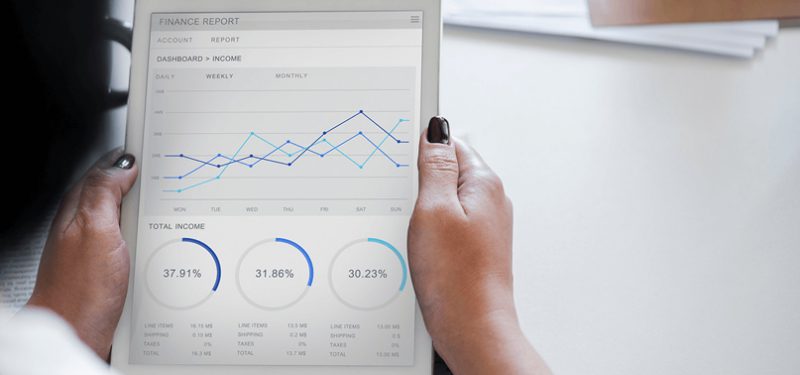
Whether a campaign in particular or marketing activities in general is effective or not can be evaluated using ROI. So what is ROI in Marketing? How to use and measure ROI? Let’s find out with Malu in this article to get the most overview.
Mục lục bài viết
Toggle1. What is ROI in Marketing?
ROI stands for Return on Investment: Revenue-Cost ratio. ROI represents the amount of money a business earns for every dollar of expenses it spends. For example, if the ROI is 5:1, every $1 a business spends will bring in $5 in revenue.

The term ROI was born with the aim of linking the profitable activities of businesses with the money they have to spend on business activities. The same is true when we measure the effectiveness of marketing activities. ROI uses two main factors to calculate: How much businesses have to spend, and how much money they get from these activities (in this case, we use the revenue factor to calculate).
In the article below, we will dive into learning about ROI, the aspects related to this term and how to optimize ROI in marketing.
Learn more about Market Research – Market Research
2. Meaning of ROI in Marketing
From a business perspective, calculating ROI can help businesses make the right business decisions and optimize marketing activities.
In the next part of the article, we would like to introduce you to the benefits that managers can get when using ROI in Marketing:
Marketing Budget Calculation
For senior managers, the overall calculation of the Marketing index is extremely important. This helps them balance the Marketing budget with other activities in the business such as production costs, selling costs, space costs, etc.

Having in hand the ROI index, senior managers can accurately calculate the appropriate marketing budget so that marketing activities do not affect other activities of the business.
Marketing budget distribution
In a Marketing campaign, managers need to determine exactly which activities bring the greatest efficiency to maximize their resources.
That’s why businesses use ROI to calculate the specific revenue source of each marketing activity.
Measure the effectiveness of the campaign
The ROI index helps businesses measure the effectiveness of the campaign in the present time. From there, businesses can decide to continue investing in the campaign, or narrow the scope of investment.

More specifically, from the ROI index, senior managers can fully know how to optimize the effectiveness of the campaign so that they can make appropriate marketing strategies and decisions.
Competitor rating
By tracking the ROI of your competitors, you can understand their position in the market.
“Knowing people know me, a hundred battles a hundred wins”, the more you understand your opponent, the better your chances of defeating them in the marketplace.
3. Calculate ROI
Formula for calculating ROI
The ROI index is calculated quite simply. You can use the following formula:

In which: Net profit (also known as profit after tax) = Expected revenue – Investment cost.
* Expected revenue: Usually, we have different ways to calculate expected revenue accurately.
Your projected revenue can be equal to total sales multiplied by cost of goods sold. Whatever the result, you multiply by the expected profit percentage.
![]()
* Investment costs: These are all costs that businesses use for their business activities, including costs of premises, costs of personnel, machinery, equipment, and infrastructure. , electricity and water costs, taxes, etc.

The costs that businesses need to consider in a Marketing campaign include:
- Labor costs.
- Fees for intermediary partners.
- Advertising costs (buying spots on television, Google Ads bids, …).
In addition, you can also calculate ROI through the Customer Lifetime Value metric (CLV, customer lifetime value). The meaning of this index is: Provide parameters related to the value that customers can bring to the business in the long term. CLV can be calculated by the formula:
CLV = Percentage of customers who maintain the relationship / (1 + Rate of customers who terminate the relationship / Rate of customers who maintain the relationship)
> Product Life Cycle – Product life cycle concept
What is a good ROI rate?
For companies with COGS accounting for less than 50% of the product’s selling price, they do not necessarily need to promote marketing activities to stimulate higher sales. In this case, the ROI of the business will definitely be low.
For companies whose COGS accounts for more than 50% of the product’s selling price, they need more marketing efforts to compensate for the high cost of producing goods. So their ROI will definitely have to be high.
As such, the ideal ROI for businesses would be around 5:1. Whether that ratio is higher or lower than 5:1 depends heavily on the firm’s net cost of production.
4. Disadvantages of ROI
While calculating ROI can help businesses see the benefits they can derive from a marketing campaign, this metric is not immune to limitations such as:
The calculation of the ROI index is not enough to give an overview of the business operations of the business. There are some other aspects that ROI has not shown such as: Seasonal factors, unpredictable events, etc.
ROI only talks about the short-term benefits for the business. Longer-term aspects such as brand awareness and customer relationships are not covered in this index.
ROI can be difficult to calculate in a cross-platform Marketing environment, businesses with many touch points with customers, etc.
The ROI model can be relatively outdated for businesses.
> Customer Experience – Managing customer experience
5. Improve ROI with Customer Life-time Value
Customer lifetime value refers to the fact that businesses have customers who use their services for a long time, possibly for life (also known as patrons/loyal customers). A lot of businesses are only interested in attracting new customers, who are just getting acquainted and using the product / service of the business for a short time.
The truth is that loyal customers play a much more important role in the overall proportion of the number of customers that businesses hold.

Calculating costs, revenue and measuring the effectiveness of marketing activities is not a simple job that can be done overnight. To optimize ROI in marketing, in addition to needing to pay attention to the 5:1 index, businesses can completely use additional tools like Hubspot or Marketo.
Although marketing activities are not simply a matter of revenue and expenditure, profit and loss, the management and control of costs – revenue in a reasonable way is an important thing, which needs to be taken care of if a business wants to grow. efficient and sustainable development.
6. Other aspects related to ROI
When calculating ROI, businesses need to consider the following business aspects:
Define marketing goals in particular and business goals clearly. You can apply the SMART model to effectively define your business goals.
Calculate and allocate budget for Marketing activities accurately and effectively.
Use the appropriate computational model and analysis of marketing activities. Your business’s ROI is only reliable when your business collects accurate information and data.
Hope the above article has helped you to have the best overview of ROI in Marketing, check out more articles at Malu Blog .




